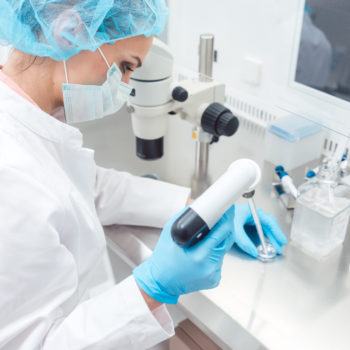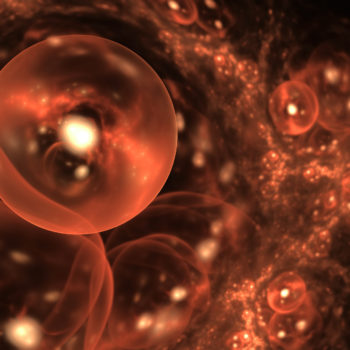
 Once you understand what perinatal tissue is what it does, it’s much easier to understand why people with chronic back and knee pain, diabetes and diabetic neuropathy, arthritis and those undergoing chemotherapy treatment are increasingly choosing the non-surgical treatment option of perinatal tissue therapy over invasive surgical options and/or the side effects of pain and other medications to treat ailments.
Once you understand what perinatal tissue is what it does, it’s much easier to understand why people with chronic back and knee pain, diabetes and diabetic neuropathy, arthritis and those undergoing chemotherapy treatment are increasingly choosing the non-surgical treatment option of perinatal tissue therapy over invasive surgical options and/or the side effects of pain and other medications to treat ailments.
The ultimate goal of many perinatal tissue clinical trials is the reduction of inflammation and pain caused by lots of injuries and illnesses. Addiction is a good example where inflammation isn’t widely known by the general public as a key driver. In addicts, a section of the brain is inflamed, requiring more and more of their drug of choice to temporarily numb pain. By reducing the inflammation while also treating any physical, psychological or emotional pain, researchers are finding that they can radically reduce addiction symptoms, relieving the addict’s need to self-medicate while also healing the brain.
Perinatal Tissue therapy is sometimes confused with platelet rich plasma (PRP). PRP treatments use the patient’s own blood, spun in a centrifuge so that the platelets are separated and reinjected in a solution back into the patient’s body. Platelets are the initial emergency medicine response to illness or injury, so PRP is used to treat acute injuries, such as a torn muscle or badly sprained ankle, where there is the need for a rapid response.
Perinatal tissue therapy is used when the injury or illness is chronic, including cancer, Alzheimer’s disease, multiple sclerosis and other chronic diseases such as diabetes, COPD and chronic joint pain, because the treatment process is longer and the depth of treatment needed is deeper.
What is Perinatal Tissue?
 Perinatal tissue is the construction workers of life. Each cell is programmed with a specific construction specialty, such as building organs, skin, bones and other tissues.
Perinatal tissue is the construction workers of life. Each cell is programmed with a specific construction specialty, such as building organs, skin, bones and other tissues.
Once an egg is fertilized, perinatal tissue rapidly multiplies and focus on their job specialty, growing that egg into a life, including a human fetus.
Not only do they typically have a specialization, but they also have an internal clock that tells them when to multiply, at what rate to multiply and when their specialized task needs to be completed, just as construction workers who are building a tall building. In building construction, plumbing can’t be built into the structure until the skeleton of the building is in place. And, plumbing fixtures aren’t added to kitchens and bathrooms until after the central plumbing infrastructure is completed. It is exactly the same with each of us being “built” in an order that ensures that each part of us is created at the right time and built fully functional.
Going deeper, perinatal tissue can also act like a handyman, making simple or complex repairs after we (or the tall building) are completed. This is the truth and the promise of perinatal tissue therapy- that trained cells can and do repair damaged or diseased cells, organs and more in our bodies, on demand.
At birth, with our rapid development from fetus to infant to toddler to child, cells are young, healthy and very abundant. There is a lot of construction and handyman work going on, so large pools of cells are rapidly supporting our growth and development.
As we age, cells have radically reduced numbers and their maturity means that they generally can’t be taught to do anything new, also known as differentiation.
What are the Different Types of Perinatal Tissue?
There are 3 commonly recognized perinatal tissue types. They are embryonic, adult and induced-pluripotent cells. Let’s look at each one and how it can help you.
Embryonic
When an egg is fertilized, perinatal tissue is the first cells created. Initially, each cell is immature and doesn’t yet know what it is supposed to do. As they begin to mature, their function and schedule become clear and they either immediately go to work or lie dormant until it’s their time.
During the entire development process, cells are dividing, doubling themselves at an amazing rate.
Embryonic cells are most often harvested from eggs that have been donated by women and fertilized in a laboratory.
Adult Cells
There are 3 types of adult cells, hematopoietic, mesenchymal and fetal cells. All adult cells are also known as progenitor cells, because they are more mature and are already programmed for a specific function and, unfortunately, are not able to duplicate or regenerate.
Hematopoietic cells are the cells that form our blood and our immune system. These cells, found in our bone marrow and in the umbilical cord blood of fetuses, were the original cell therapy workers and are commonly used to speed recovery from chemotherapy and other diseases or treatments that are especially tough on the blood stream and bone marrow.
Mesenchymal cells are found in fatty tissues, organs and in bone marrow. These cells form connective tissues and are commonly used to reduce and/or eliminate inflammation. When mesenchymal cells are found in an organ, they typically are specialized to the development and care of that organ. These cells are also known as adipose tissue cells or just adipose cells.
Fetal cells are more specialized than even just a few short weeks earlier when the egg was fertilized. They may have a small optional set of functions that they can perform, unlike the wide open embryonic cells, but they are already fixed into an area of specialization.
Induced-Pluripotent Cells (IPS)
Induced pluripotent cells are adult cells that have been reprogrammed in a laboratory to function more like embryonic cells. The big difference between embryonic cells and IPS cells is that IPS cells are replicated in a laboratory.
Where Does Perinatal Tissue Come From?
Perinatal tissue comes from several sources, including donated and fertilized eggs, your own body and laboratories.
It is becoming increasingly rare to harvest cells from the patient’s own body. The reason is simple math. As we age, we have less and less cells, making it harder to harvest enough cells for any meaningful treatment. However, as outlined in this article from biofunctionalmedicine.com, when cells are harvested from the patient, the process includes extracting fat tissue from the patient, then harvesting the cells from that fat tissue. The tissue is extracted under general or local anesthesia.
The other and more common option is that cells are harvested from fertilized eggs. These eggs are either donated by women specifically for cell therapy or donated indirectly from in-vitro fertilization clinics with consent from the woman.
The problem with harvesting from fertilized eggs is also a problem of math. With so many people turning to perinatal tissue therapies, there simply aren’t enough fertilized eggs to produce the needed cells. Further, many, many universities and medical facilities are conducting clinical trials where actual cells are needed, further straining the need for cells and increasing the shortage.
Simply put, there are just aren’t enough embryos to go around.
However, where there’s a will, there’s a way. Medical professionals have figured out how to take a few cells and replicate them into millions more in specialized laboratories. These cell “factories” can and do produce the numbers of cells needed for clinical trials and for patient treatments.
And, as the number of perinatal tissue clinics continues to grow, science is meeting the need by not only producing enough base cells, but by also “teaching” early life cells to handle specific tasks, aiming the lab-created cell populations where they are most needed.
Researchers are also performing clinical trials to see if they can find other mechanisms for rapidly producing healthy cells because the list of medical conditions that can be helped with transplantation is only growing with research and time.
What are the Common Perinatal Tissue Therapies?
There are several illnesses and injuries where perinatal tissue therapy can help you avoid invasive surgical procedures and reduce and eliminate pain without medications.
Perinatal Tissue Therapy for Diabetes
Diabetics are often plagued by peripheral neuropathy. This nerve damage is frequently caused by long-term reduction in blood flow, especially in your legs, causing tingling, numbness and pain. And, without reversing the blood flow reduction, the end game is limb amputation. Perinatal tissue is used to improve blood flow and strengthen blood vessels.
Perinatal Tissue Therapy for Arthritis
Arthritis sufferers feel pain in specific joints due to a loss of the synovial fluid and cartilage between bones and weakness in the supporting structures, including muscles and ligaments that keep bones in place and working correctly.
Perinatal tissue therapy is used to strengthen supporting structures using your body’s own healing mechanism, triggered at an accelerated rate by the introduction of millions of young, heathy and vibrant cells.
Perinatal Tissue Therapy for Pain
If you suffer from chronic back or joint pain, you already know all too well that there are few treatment options, including anti-inflammatory medications, steroid injections and/or surgery. The source of chronic pain is always the same- inflammation that presses on nerves.
Perinatal tissue is injected directly into the area of pain or nearby, reducing the inflammation and therefore reducing or eliminating the pain.
Professional athletes, including Jack Nicklaus, have undergone treatment for chronic pain and have experienced long-term or permanent pain relief from the procedure while also avoiding surgery or even addiction to pain medications.
What is the Perinatal Tissue Therapy Treatment Process?
 Following an understanding of your complete medical history, a treatment plan including all of your treatment options is built specifically for you and your medical problem. This treatment plan will typically include injections over a period of weeks or months.
Following an understanding of your complete medical history, a treatment plan including all of your treatment options is built specifically for you and your medical problem. This treatment plan will typically include injections over a period of weeks or months.
Most patients start feeling relief within 24-48 hours and the relief deepens with time.
Each injection will be rich with millions of cells that are healthy and ready to work. In some cases, the injections are aimed at the bone marrow, which is the epicenter for healing chronic joint pain and inflammation. In other cases, perinatal tissue might be injected directly into a particular place, such as an organ.
Once injected, the cells get to work. The continued injections are scheduled so as to allow each group of perinatal tissue to begin the healing process while also boosting that process with more new cells.
During and after the treatment plan, you will be monitored for overall health and for the reduction or elimination of the symptoms you are experiencing.
So, if you have chronic joint pain, we will be monitoring you for relief of not only the pain symptoms, but also for your ability to reduce and ultimately eliminate anti-inflammatory and/or pain medications.
In the case of neuropathy, especially in diabetics, we will be monitoring and measuring for increasing blood flows, especially in your extremities with the goal being saving your extremities from further decay and/or amputation.
In the case of patients undergoing chemotherapy, the goal of the transplant is to boost your recovery time and white blood cell count, which boosts your immune system and reduces the likelihood of viral infections or necessary isolation because of your suppressed immune system. We would also expect that you will feel more energetic and this reduction in fatigue would allow you to be more active between chemotherapy treatments, also improving your recovery during and after cancer treatment.
Does Perinatal Tissue Therapy Have Any Side Effects?
There typically aren’t any side effects from perinatal tissue therapy, beyond the possibility that the injection site may become irritated or inflamed, but we are committed to ensuring that proper sterile processes are used throughout your perinatal tissue therapy treatment.
How Do I Get Started With Perinatal Tissue Therapy?
 The first step in getting started is to schedule a meeting with our team. In this first meeting, we’ll review your medical history and also take typical baseline medical measurements, such as your blood pressure. We’ll also review what specific illness or injury you are looking to treat, your treatment history prior to the assessment appointment and then be able to build your personalized treatment plan as well as reviewing costs and payment options including insurance coverage or reimbursement based on your medical insurance provider.
The first step in getting started is to schedule a meeting with our team. In this first meeting, we’ll review your medical history and also take typical baseline medical measurements, such as your blood pressure. We’ll also review what specific illness or injury you are looking to treat, your treatment history prior to the assessment appointment and then be able to build your personalized treatment plan as well as reviewing costs and payment options including insurance coverage or reimbursement based on your medical insurance provider.

Schedule Appointment
Office Hours
Tues: 9:00am - 7:00pm
Wed: 9:00am - 7:00pm
Thurs: 9:00am - 7:00pm
Fri: 9:00am - 5:00pm
Sat: Closed
Sun: Closed

